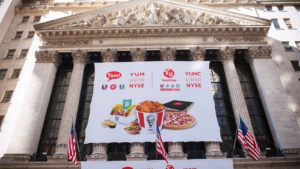Here, on the list, the first company excels in iron ore production and cost control, achieving record-high output while managing expenses. This operational prowess positions it as a strong contender for future growth. Meanwhile, the second company maintains robust profit margins and impressive expansion capabilities. Its aggressive store opening strategy and sharp capital expenditures underscore its potential for sustained profitability. Lastly, a third company stands out for its operational efficiencies. These are achieved through workforce reductions and automation. This strategic approach not only reduces costs but also enhances overall performance.
Focusing on these fundamental strengths – production efficiency, profit margins, and cost management – can identify stock opportunities that might otherwise go unnoticed.
Vale (VALE)

Vale (NYSE:VALE) specializes in iron ore production and logistics. Its iron ore segment drives its growth potential, evidenced by strong production performance and effective cost management. In the second quarter, Vale saw its highest iron ore production since 2018. This accomplishment underscores the company’s operational improvements.
Moreover, Vale shows the capacity to meet growing global demand. The consistent production increase over three consecutive quarters reflects Vale’s strategies. Vale’s C1 cash cost for iron ore was $24.9 per ton, 6% higher than the previous quarter. The increase was due to seasonal inventory turnover and maintenance activities.
Despite short-term cost pressures, Vale’s full-year guidance is between $21.50 and $23 per ton. The company’s ability to manage costs effectively highlights its operational efficiency. Freight costs decreased to $19 per ton, or $6.80 lower than the Brazil-China C3 route average. Vale’s long-term affreightment contracts contribute to this cost reduction and enhance overall profitability.
In short, Vale is on the overlooked stocks list. This is due to its impressive production performance, effective cost management, and strategic freight cost advantages.
Yum China (YUMC)

Yum China (NYSE:YUMC) operates a vast network of fast-food restaurants. The company had a core operating profit of $396 million in the first quarter, a 1% increase from the previous year. This increment shows the company’s ability to maintain profitability. The operating profit margin was 12.6%. Although slightly lower than before, it reflects efficient cost management.
Yum China surpassed the 15,000-store milestone and opened 378 net new stores in the quarter. This achievement indicates an aggressive expansion strategy. The rate of store openings has accelerated significantly. Notably, the last 5,000 stores were added in just four years.
Flexible store models and strategic investments drive this growth. KFC’s small-town mini model and Pizza Hut’s compact model are examples. These models reduce capital expenditure per store. The average capex for new stores ranges from RMB 1.2 million ($168,000) to RMB 1.5 million, and some models cost as little as RMB 0.5 million. Yum China is notable for its significant store expansion. It maintains high profit margins and efficient capex in new formats. Overall, this makes it a strong contender among overlooked stocks.
United Parcel Service (UPS)

United Parcel Service (NYSE:UPS) offers global logistics and delivery services. The Fit-to-Serve initiative boosts operational efficiency. United Parcel Service reduced its workforce by over 11,500 positions. This cut resulted in approximately $350 million in savings for the first half of 2024. Moreover, the company anticipates $1 billion in savings by the end of the year.
Workforce reduction aligns with streamlining operations and enhancing cost-effectiveness. United Parcel Service has also closed 17 operational facilities in Q2. The company plans a total of 35 closures this year.
Additionally, automation efforts complement this restructuring. Dispatch process automation cut staffing by 26%. These measures are part of the “Network of the Future” strategy, which focuses on improving operational efficiency and reducing costs. Despite rising union wage rates (up 11.7%), United Parcel Service managed a 2.5% cost-per-piece growth rate, the lowest in over three years. Effective expense management and productivity initiatives are key to this achievement. Hence, the lower growth rate highlights United Parcel Service’s cost management capabilities.
United Parcel Service is noted as an overlooked stock for operational efficiencies. Workforce reductions and automation are optimizing network operations and cost management.
On the date of publication, Yiannis Zourmpanos did not hold (either directly or indirectly) any positions in the securities mentioned in this article. The opinions expressed in this article are those of the writer, subject to the InvestorPlace.com Publishing Guidelines.
On the date of publication, the responsible editor did not have (either directly or indirectly) any positions in the securities mentioned in this article.
Yiannis Zourmpanos is the founder of Yiazou Capital Research, a stock-market research platform designed to elevate the due diligence process through in-depth business analysis.
